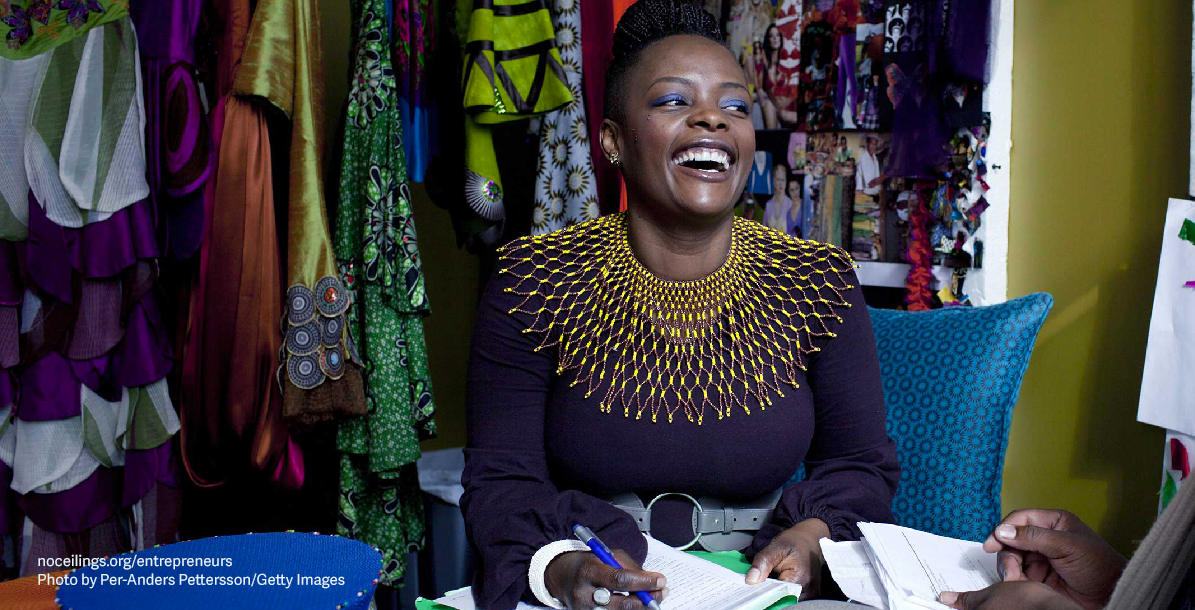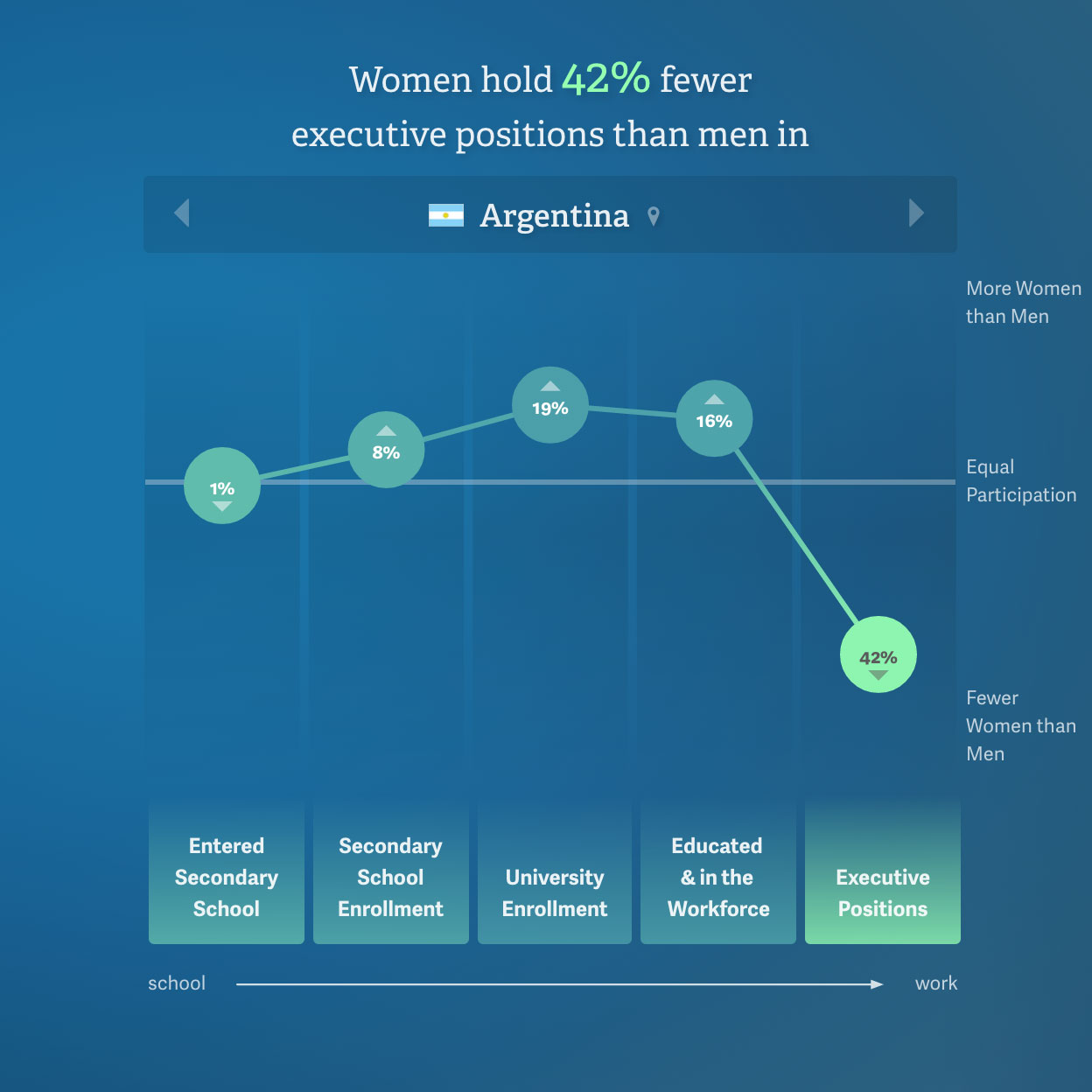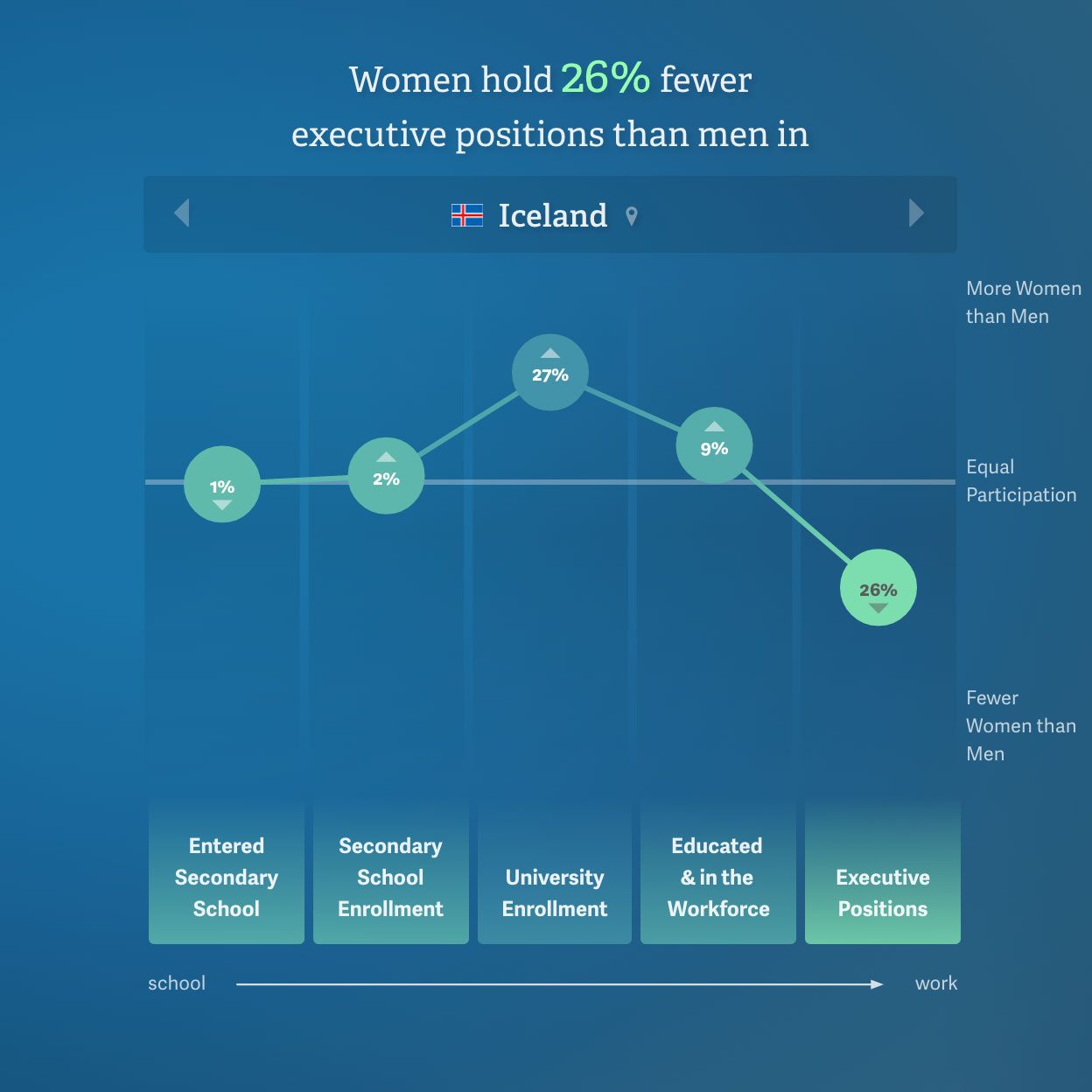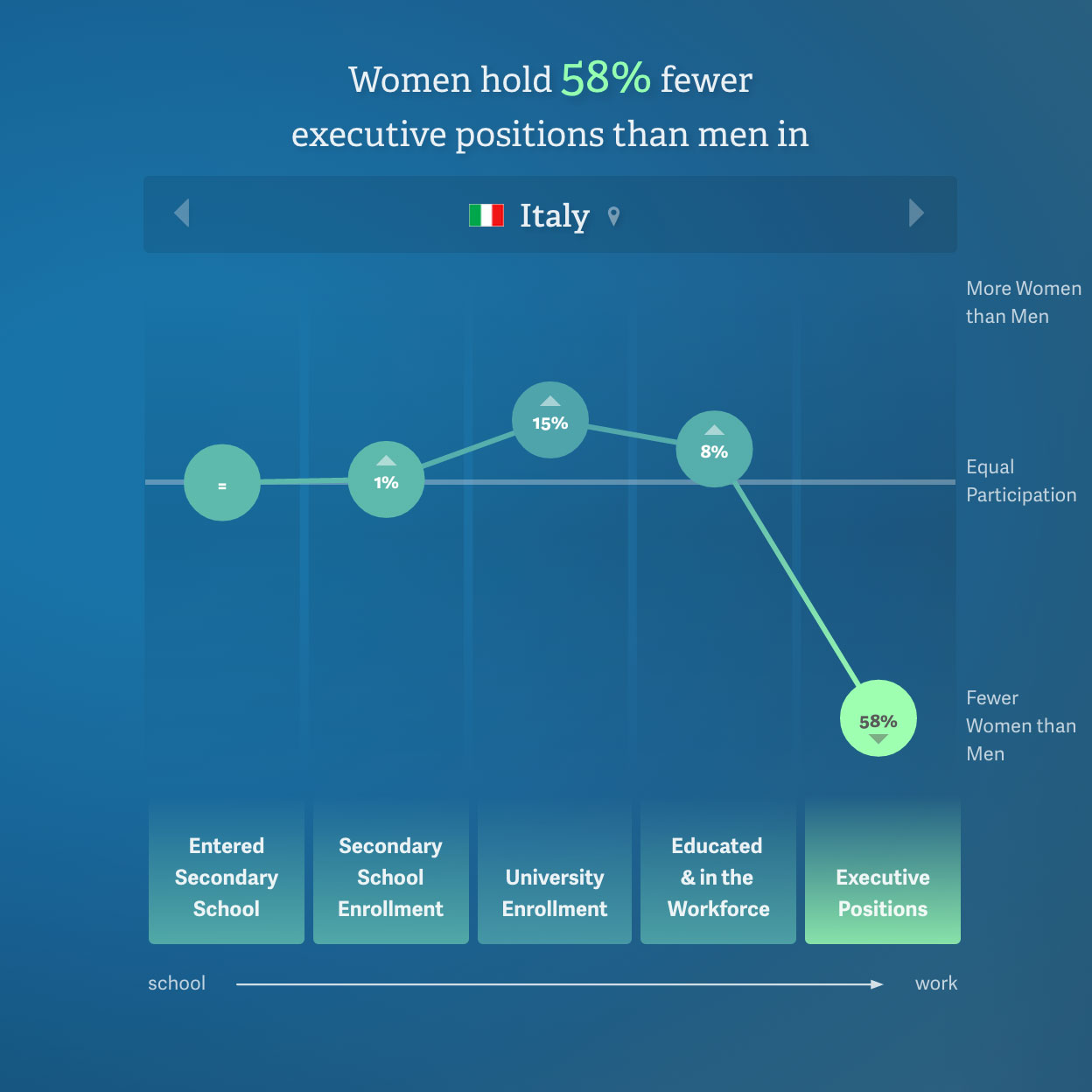


In Europe and Latin America, more women enroll in college than their male colleagues. Further, there tends to be higher concentrations of female college grads in the workforce than men with equivalent schooling.
So why is it that the share of men in high-level management positions is so much greater than that of women? Our No Ceilings story on women’s transition to the labor force shows that though women receive equal or higher levels of education, they are far less often in executive or management roles. A 2011 study by the Harvard Business Review found that for more than 7,000 leaders “at every level, more women were rated by their peers, their bosses, their direct reports, and their other associates as better overall leaders than their male counterparts—and the higher the level, the wider that gap grows.” The disparity is certainly not a matter of competency.




The study also compares male and female performance of 16 core traits that are important to effective leadership. Women outscored men the most in areas of “taking initiative and driving for results—[which] have long been thought of as particularly male strengths.” As we take findings from the study to a more tangible level, it’s interesting to see how women’s entrepreneurial initiative varies geographically.
It’s worth noting that countries in Sub-Saharan Africa and Latin America have higher rates of female entrepreneurship than the U.S., and most countries in Europe for that matter. The share of female entrepreneurs in Nigeria rings in at 41%, while in the U.S. just 10% of women are entrepreneurs.
Much of the regional variance reflects the different stages of national economies. Africa and Latin America contain economies where the fear of failure is less than that of more innovation-driven economies like Europe and North America. Of course there are many other issues at play which you can learn more about by reading the Global Entrepreneurship Monitor’s 2014 Global Report.

All this being said, the conditions and hurdles facing businesses in Sub-Saharan Africa put the odds against entrepreneurs. Even with the difficulty of accessing funding, lack of government support, corruption, and lack of access to research, entrepreneurs in Sub-Saharan Africa have shockingly high levels of enthusiasm.
So, what can we say about how gender influences where we land in our careers? Even with higher levels of educational attainment, a myriad of structural and cultural issues hinder the professional success of women in more developed economies.
And as far as the ladies in Sub Saharan Africa go, well, we’re still trying to figure out how we can emulate their go get ‘em entrepreneurial spirit. With so many barriers to success, their initiative to expand opportunities, gain independence, and increase their incomes certainly sets an example worth striving towards.